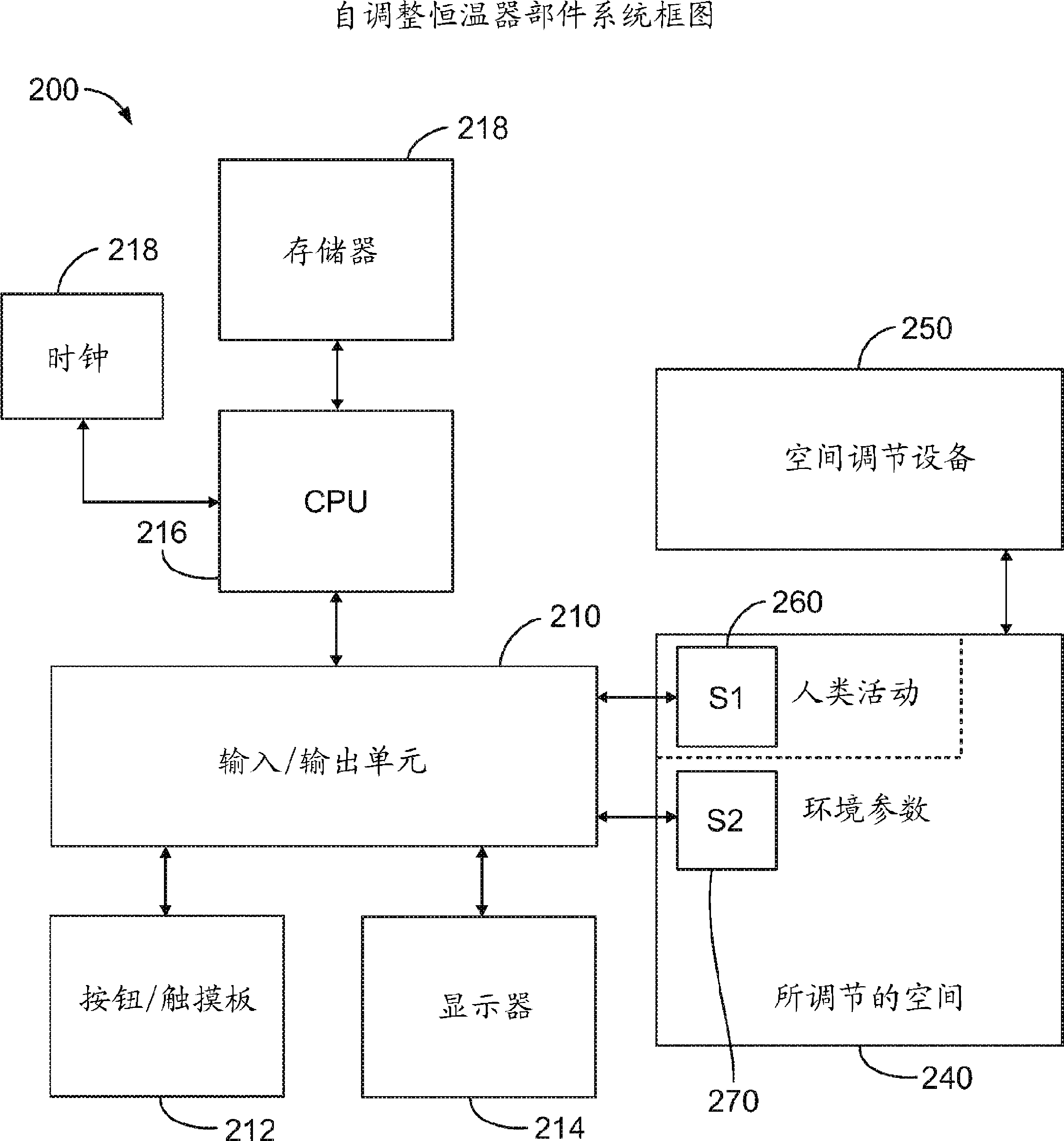Self-adjusting thermostat for floor warming control systems and other applications
A thermostat and occupancy sensor technology, applied in the field of thermostats, can solve the problem that the thermostat is too time-consuming and complicated to program
- Summary
- Abstract
- Description
- Claims
- Application Information
AI Technical Summary
Problems solved by technology
Method used
Image
Examples
Embodiment Construction
[0044] figure 1 is a top view of an environment 100 in which a self-adjusting thermostat may be used. Environment 100 is shown as a residential building, but may be any commercial or industrial building where it is desired to control the temperature of a floor or area of the environment, and thus is not limited to residential buildings. Self-adjusting thermostat 110 is shown placed within environment 100 . Self-adjusting thermostat 110 is in communication with occupancy sensors 112 , 114 , 116 , 118 , and 120 . Although multiple occupancy sensors are shown, the self-adjusting thermostat may be used with only a single occupancy sensor as desired. Occupancy sensors can take various forms as described above, and can include infrared, line-of-sight, thermal, magnetic, capacitive / inductive coupling sensors, as well as lighted fixtures / switches that sense people in the immediate vicinity or scents in a room. A mechanism or the like in the dispenser can be used to sense occupan...
PUM
 Login to View More
Login to View More Abstract
Description
Claims
Application Information
 Login to View More
Login to View More - R&D
- Intellectual Property
- Life Sciences
- Materials
- Tech Scout
- Unparalleled Data Quality
- Higher Quality Content
- 60% Fewer Hallucinations
Browse by: Latest US Patents, China's latest patents, Technical Efficacy Thesaurus, Application Domain, Technology Topic, Popular Technical Reports.
© 2025 PatSnap. All rights reserved.Legal|Privacy policy|Modern Slavery Act Transparency Statement|Sitemap|About US| Contact US: help@patsnap.com



